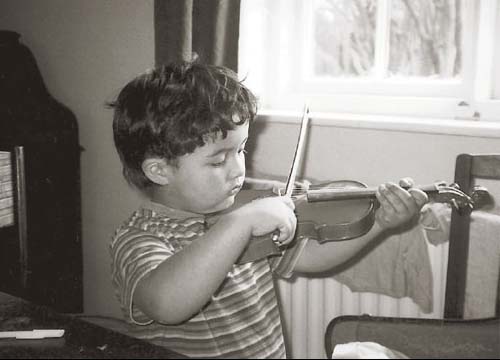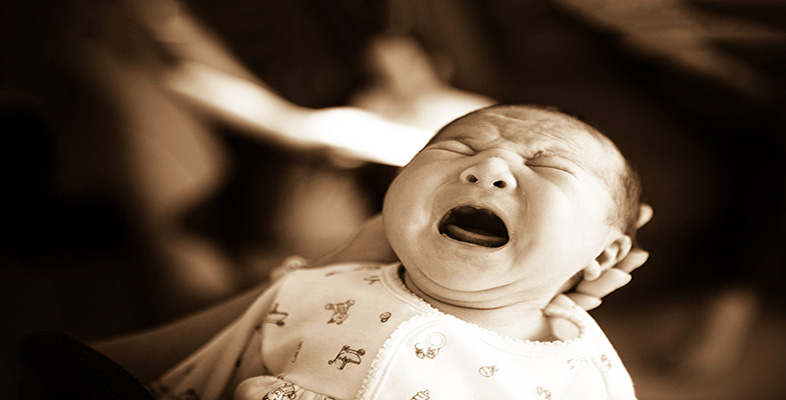2.3 Mia's first birthday
It is Mia's first birthday. After a birthday tea and before her bedtime the Family sit down with their photograph albums and watch a video made around the time of her birth. The Family look back to that time and share their experiences of birth and what they noticed she could do.
Activity 3: Mia's birth
Read the extracts from the accounts by Mia's Family below. They were asked to think back to her birth and the few weeks following it, and remember what she was like and how they felt. They used video pictures and photographs to help them.
As you read, make notes on what the Family noticed about Mia and:
her range of emotions
her communication and social skills
her need for contact and her use of her senses
the things the Family members noticed Mia doing that might make them want to be with her, and to follow her lead in some way.
You will have come across some of these in the reading you did for Activity 2. ‘Emotions’ refers to Mia's ability to feel happiness, sadness, anger, etc. ‘Communication and social skills’ will include the way in which she lets other people know what she wants and also how she behaves with other people.
When Mia was very young

Discussion
Between them, the Family seems to have noticed many areas of Mia's abilities. They observed her expressing a range of emotions, although they had to interpret these as they cannot know exactly what they were – excitement and anticipation; satisfaction; agitation. They noticed her communication and social skills (following Rosalind with her eyes), her pleasure at human contact (snuggling into Daisy, letting Eamon soothe her to sleep), and her use of her senses. Ryan was even able to get Mia to play with him! Some things noted by Mia's Family as being individual to her are in fact very common: copying someone by poking out her tongue, gripping tightly with her finger, responding to the smell of breast milk and to sounds and bright patterns. The fact that Mia does respond in these common ways is important as it helps her to form relationships with her Family as they delight in and respond in turn to her actions.
Some of the observations of Mia are more likely to be individual to her – did you find any of these? We thought her size may be one – it could be that she just seemed small to Ryan, but if Mia really is a small and delicate baby, then her Family may respond to her more cautiously than if she was chubby and robust. Similarly, from the description we have, Mia appears to be quite an emotionally self-sufficient baby – she settles quickly and does not cry for long if she is not hungry or uncomfortable.
The Family is finding Mia rewarding to be with and already are setting up patterns of communicating with her that are quite individual. For example, poking out tongues may become a game that Mia and Ryan particularly enjoy, Eamon and Mia may come to regularly enjoy bedtime routines together, and Rosalind may always greet Mia by holding out her hand and waiting for Mia to grasp it.
Babies differ from each other from a very early age in what they look like and how they behave, and we have seen that these aspects influence how other people behave towards them. Babies also begin to respond to other people's expectations. People around them may think of a baby in a particular way – as ‘calm’ or ‘strong’ or ‘serious’ or ‘musical’ – and treat them like this whether or not they actually are. When she turns her head to a song, Mia encourages more songs to be sung and may continue to be thought of and behave like a ‘musical’ child. If she is thought of as ‘small and delicate’ by everybody, she may grow used to being protected and may take fewer risks. Sometimes different behaviour is encouraged or discouraged in boys and girls. Researchers at Sussex University in England found adults treated boy and girl babies very differently, depending on whether they thought they were playing with a boy or a girl. The researchers demonstrated this by dressing boy babies in pink and girl babies in blue and observing how adults related to them.
So, the development of babies’ personalities comes from the way in which people react to and interpret very common baby behaviours, and also from what the babies are like as individuals and the way in which these characteristics are reinforced (or not) by babies’ families and the world around them.
To learn about individual babies and what they can do, it can be useful to watch them and think about the way in which they behave in relation to the people around them.

![‘When he was newborn I breastfed on demand and he rarely cried. He let me know he was hungry by “rooting” [open mouth looking for nipple]. By the time he was about three months old he had a “tired” cry which was more of a whinge and an occasional “colic” cry which was more of a shriek!’](https://www.open.edu/openlearn/pluginfile.php/72776/mod_oucontent/oucontent/611/f85642f9/408d472d/y156_2_q003i.gif)